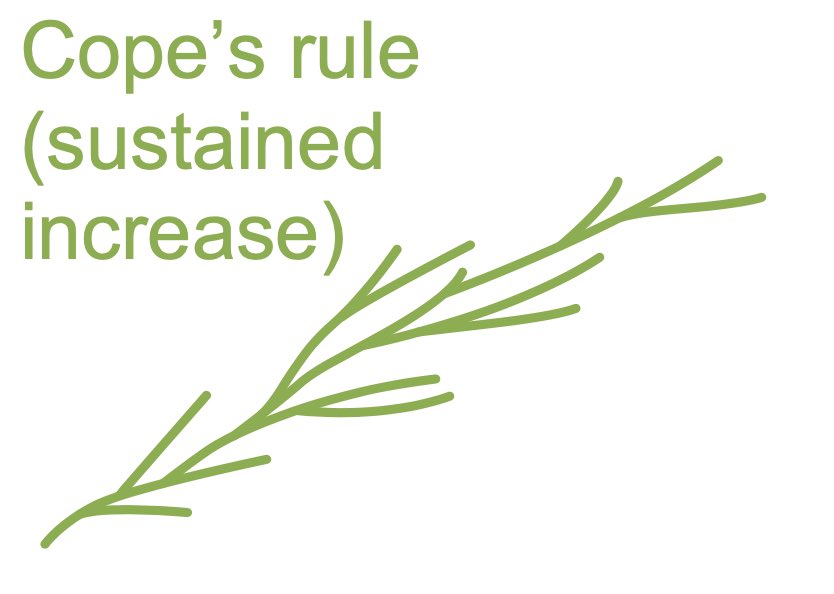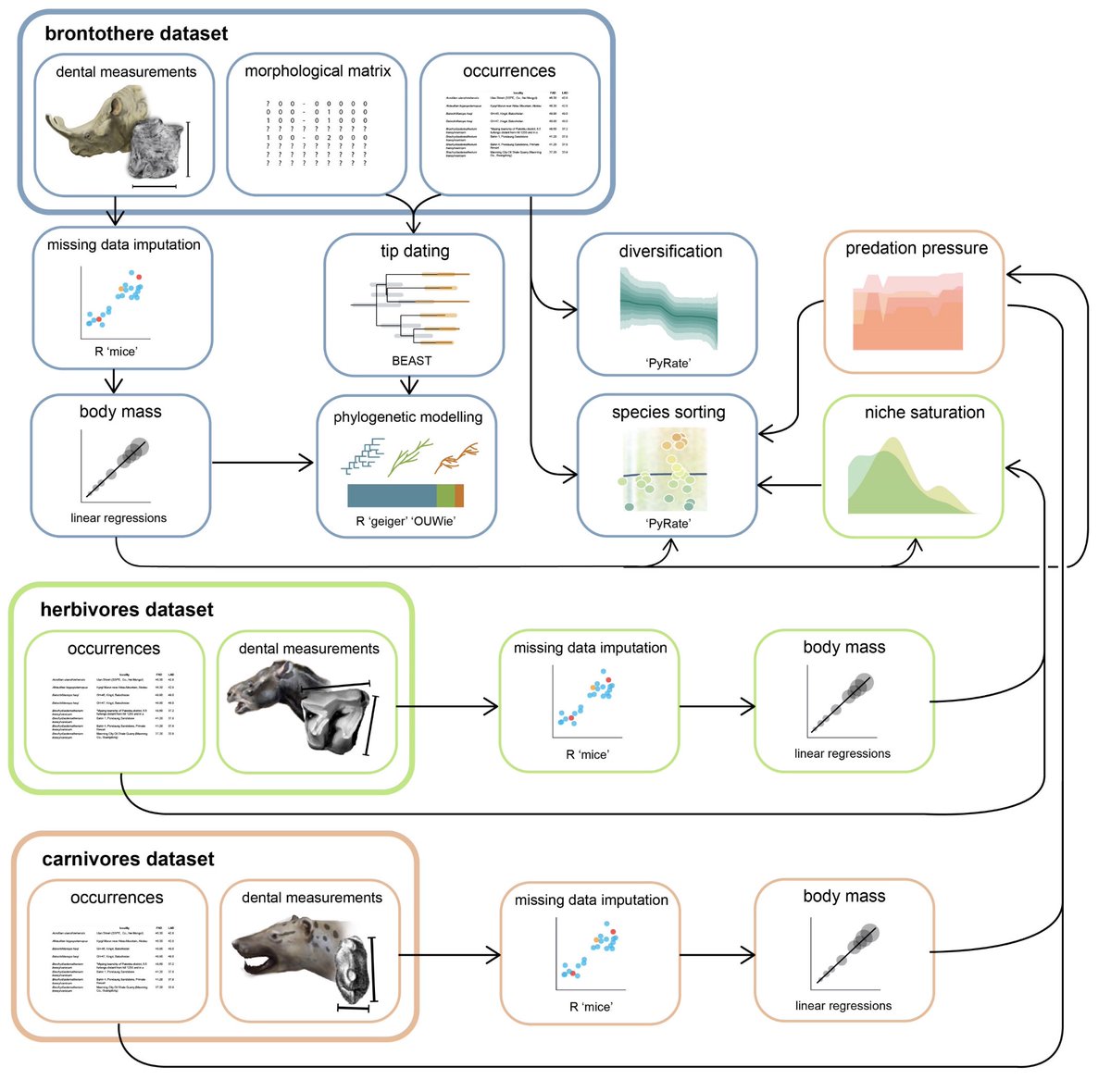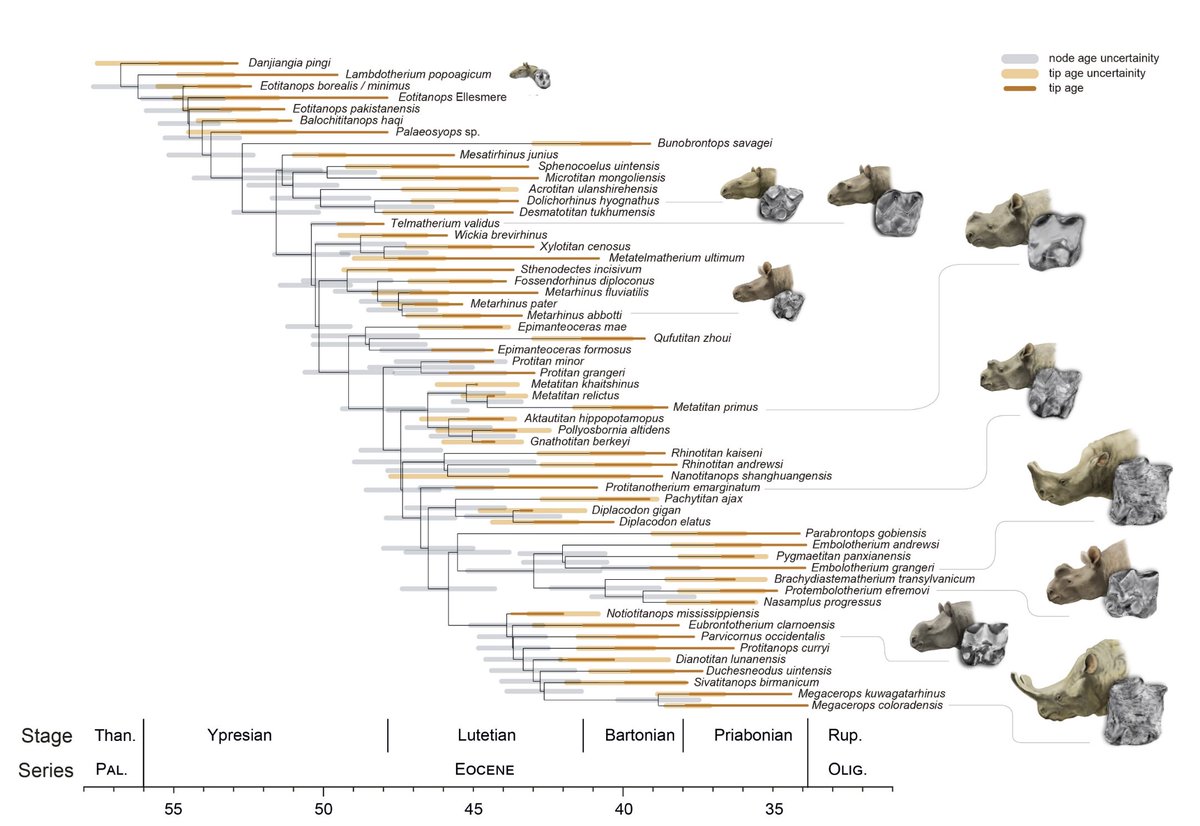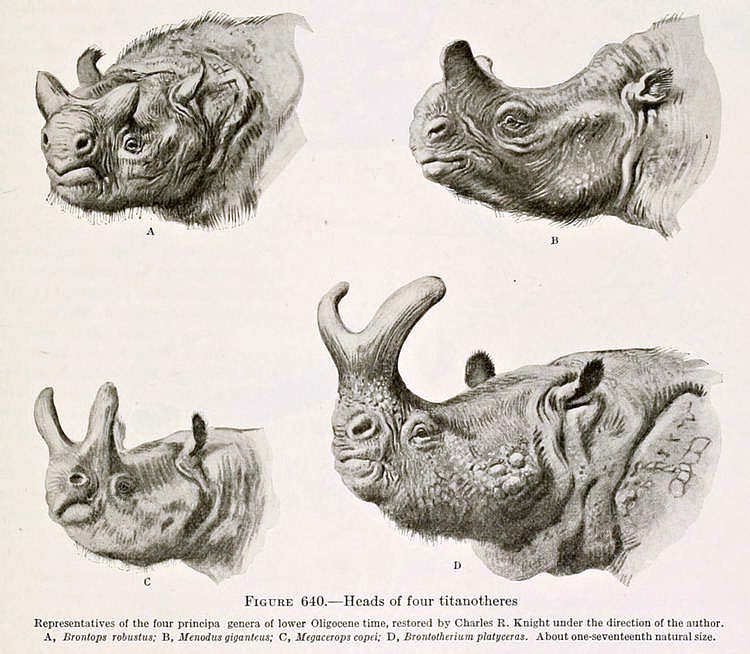1/How did #megaherbivores come into existence? How did they evolve into multitonne sizes? Today we present our results @ScienceMagazine
[science.org/doi/10.1126/sc…]
#macroevolution #brontotheres #paleontology #paleobiology
Here is a 🧵 on our new paper 📄 [1 of 18]
[science.org/doi/10.1126/sc…]
#macroevolution #brontotheres #paleontology #paleobiology
Here is a 🧵 on our new paper 📄 [1 of 18]

2/ The emergence of large animals is a recurrent feature in #evolution. Traditionally, this pattern has been understood as the natural outcome of an almost-universal adaptive advantage of being larger. This notion is generally known as ‘Cope’s rule’.
3/ The mechanism is expected to produce definitive and gradual trends towards large sizes by means of natural selection. 

4/ A slightly different pattern is expected if increases in body mass are linked to successive adjustments to size-related adaptive zones or selective regimes, as proposed by George G. Simpson. 

5/ These two processes predict that descendants are, overall, larger than their ancestors, and that size changes as time accumulates. In other words, they forecast trendy and gradual changes towards larger sizes.
6/ In 1973, and inspired by the theory of punctuated equilibrium [@niles_eldredge+Gould, 1972], Stanley proposed a new mechanism. Size should change mainly during speciation, with no preferential direction. Both smaller and larger species would be produced from a given ancestor 

7/ Diffusion away from filled small-size niches would result in higher proliferation of larger lineages (⬆️ speciation, ⬇️ extinction or both). This would translate in some lineages showing net increase trends towards the upper limit of the size distribution [Stanley 1973] 



8/ Using tree-based trait evolution models and diversification models we tested these three main scenarios of size evolution in brontotheres. 

9/ Brontotheres [‘thunder beasts’; also ‘titanotheres’] are an extinct family of perissodactyls (relatives of rhinos, horses, tapirs and other extinct groups). They lived in the Eocene, between 56 and 34 million years ago, in Asia and North America [illustration by RF Zallinger] 

10/ We know around 60 species of brontotheres from the fossil record. The first species weighed around 20 kg. The group rapidly evolved into > 1,000kg, and it was common to find brontotheres of more than 3 tones in Eocene ecosystems. This is the size of an Asian elephant. 

11/ Example of size differences in brontotheres. Eotitanops borealis (foreground) was one of the earliest and smallest species. In the background, Megacerops coloradensis, one of the last giants. [Illustration by @OSanisidro] 

12/ Large brontothere species had a vaguely rhino-like appearance and bore imposing bony appendages above their noses [Illustration by Charles R. Knight] 

13/ Back in the day (end of XIX and early XX centuries), brontotheres were a prominent example of linear and pre-programmed evolution. [Illustrations from HF Osborn work] 



14/ Our models show that body size evolution in brontotheres was non-directional. Changes in body size are better predicted by speciation events than by the accumulation of time, supporting the idea of an ‘speciational evolution’ of body mass, as Stanley predicted. 

15/ We then tested for a differential proliferation of larger sizes. We found that a model where smaller species inhabiting more saturated niches showed higher extinction was preferred.
16/ Our results reveal that this process explains how a non-directional model of evolution results in a clear trend towards gigantism. Processes acting once species establish, modulating their survival, are key to building the evolutionary trend we observe in brontotheres.
17/ For more information don’t hesitate to contact us, and please RT so that all brontotheres lovers get to see it! [📷 by Smithsonian Institution Archives; Public Domain] 

18/ ‘A macroevolutionary pathway to megaherbivory’
[authors: @OSanisidro @MMihlbachler @singerstone, @UAHes @nyit ]
again, the link: science.org/doi/10.1126/sc…
[authors: @OSanisidro @MMihlbachler @singerstone, @UAHes @nyit ]
again, the link: science.org/doi/10.1126/sc…

• • •
Missing some Tweet in this thread? You can try to
force a refresh

 Read on Twitter
Read on Twitter



